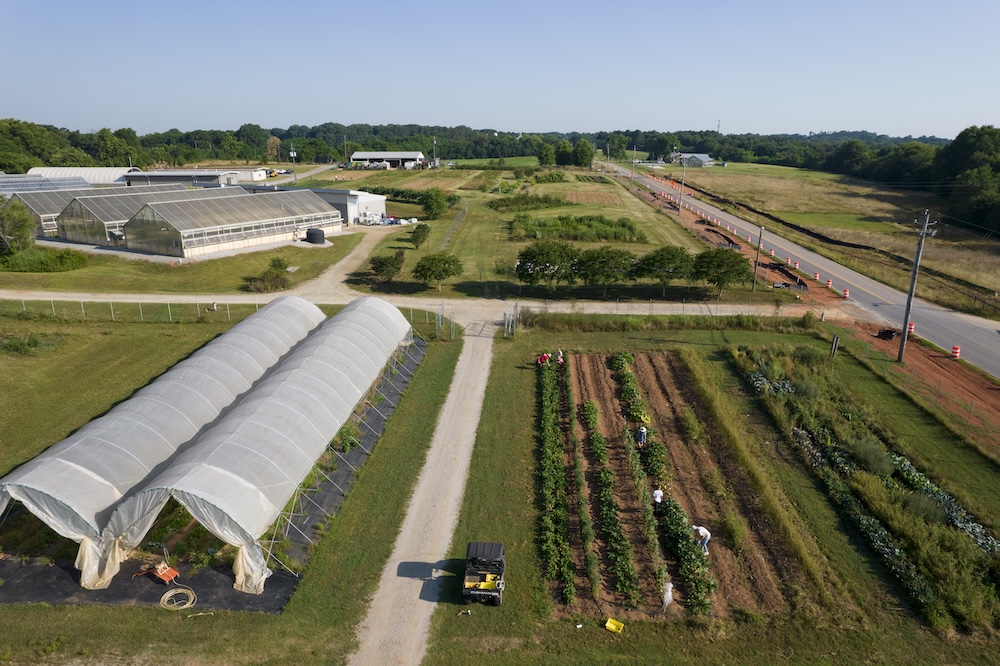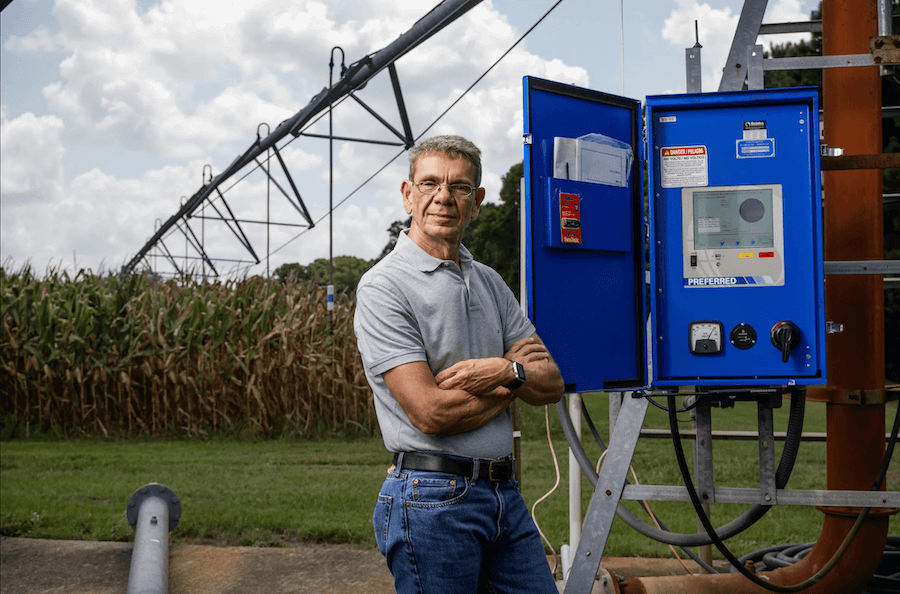Georgia farmers face another year of severe drought, and the
prices
of many major commodities remain low. But the long rows ahead
look a little better for corn growers, says a University of
Georgia
expert.
Recent rains have corn farmers "full throttle" putting
one of this year's first row-crops into the ground, said Dewey
Lee, an Extension Service agronomist with UGA College of
Agricultural
and Environmental Sciences.
Better Prices
Due to the oversupply of corn over the past few years, farmers
got low prices for their crops. But corn prices have the
potential
to strengthen this year, Lee said.
More corn was sold than produced in the United States last year.
This reduced the oversupply stock and strengthened prices. Lee
said the trend should continue this year.
Farmers had above-average production last year and still sold
more corn than they could grow. If this year is just an average
year, the U.S. should again sell more corn than is grown. This
would further reduce the oversupply stock and strengthen
prices.
Better Prices at Higher
Cost
"The growers are facing a little better price environment
this year," Lee said. "But they're having to spend a
little bit more money on growing the crop."
Nitrogen is the main fertilizer used in producing Georgia's $84
million corn crop. The price of natural gas, which is used to
manufacture nitrogen, has increased. So nitrogen prices have
risen,
too, by as much as 12 cents per pound.
The nitrogen price increase will add as much as $30 per acre to
some farmers' costs, Lee said. Though corn prices look better
than last year, farmers still face a narrow profit margin on the
crop.
Nothing Without
Water
To grow corn, you've got to have water. "Whether it comes
from the sky or irrigation," Lee said, "you've got to
have it."
The impending drought will cause problems for corn farmers.
Drought
conditions have hit southwest and east Georgia severely. In these
two regions, a farmer has little chance of producing profitable
yields without irrigation. In many cases last year, farmers
abandoned
entire fields of dryland corn, Lee said.
Most irrigation systems use diesel fuel, he said. The increase
in diesel fuel cost will add additional overhead to corn
farmers.
Planting About the
Same
Heavy rains fell over most of the state the first week of March.
Some areas received as much as 3 to 4 inches. This timely rain
fell as most corn farmers where planting their crop.
Farmers who grow corn like to go ahead and get the corn crop in
the ground and fertilized before it's time to plant cotton and
peanuts, Lee said. Sometimes they plant a little too early. Corn
that was planted in late-February runs the risk of freeze
damage.
Low temperatures in Georgia hovered around freezing in the first
week of March. Any damage to the emerging corn crop is yet to
be determined, Lee said.
Despite the encouraging rains and prices, Lee said corn farmers
this year will plant about the same amount of land as last year,
about 350,000 acres.
Published on 03/13/01
Georgia Corn Growers' Outlook Brighter
Brad Haire is the former news editor with the University of Georgia College of Agricultural and Environmental Sciences.
Experts/Sources:
 CAES News
CAES News
Three graduate researchers honored in 20th year of E. Broadus Browne Awards
05/01/25 Sean Montgomery
For the 20th consecutive year, the University of Georgia College of Agricultural and Environmental Sciences hosted the prestigious E. Broadus Browne Research Awards competition, resulting in three new graduate students being honored for their outstanding efforts in research and communication. In recognition of former Georgia Agricultural Experiment Station Director Edmund Broadus Browne, the annual competition highlights some of the best graduate research from departments within the college and challenges contestants with an oral presentation.
 CAES News
CAES News
UGArden celebrates 15 years of growing community, fighting hunger
04/30/25 Makenna Grace Reavis
The UGArden student farm will celebrate 15 years of service to the Athens community this spring with two major events: a Community Day on May 3 and an upscale Garden Gala on June 7. UGArden is a 10-acre student-run farm at the University of Georgia that produces organic produce through sustainable practices. The farm provides fresh food to Athens-area families, conducts research and offers hands-on education to students. It was founded by students in 2010 with support from the Department of Horticulture in the College of Agricultural and Environmental Sciences.
 CAES News
CAES News
Did you know you can grow: Mayhaw
04/29/25 Makenna Grace Reavis
cultivate.caes.uga.edu
Georgia, traditionally known as the Peach State, is famous for its peaches, pecans and peanuts. But thanks to its mild climate, the state also supports a variety of uncommon and exotic fruits. In a new series inspired by University of Georgia Cooperative Extension publication, “Minor Fruits and Nuts in Georgia,” we’ll highlight lesser-known fruits that thrive in Georgia and can be grown in home gardens. This month, we’re kicking things off with a tree that produces a fruit many may not know — the mayhaw.
 CAES News
CAES News
Investing in rural America through integrative precision agriculture
04/28/25
impact.uga.edu
Meet George Vellidis, director of the University of Georgia's Institute for Integrative Precision Agriculture. UGA launched the institute in 2022 to leverage interdisciplinary faculty expertise and industry ties to advance this field. “As researchers, it’s easy for us to work as individuals to solve a particular task,” said Vellidis. “But when we work together to look at problems from different perspectives, we come up with optimal solutions for even bigger challenges.”
 CAES News
CAES News
Lady Belle wins 2025 Flavor of Georgia food product contest
04/25/25 Jordan Powers
news.uga.edu
A baked good secured the top spot at the 2025 Flavor of Georgia food product competition, beating out a record 173 products submitted in 12 categories. Sunday Dinner Gritscuits, produced by Lady Belle, are French gougeres, or cheese puffs, stuffed with macaroni and cheese flavored grits with collard greens and smoked turkey. Lady Belle is a French-Southern fusion microbakery specializing in handcrafted Parisian style macarons, Belle (Signature) Macarons and savory Gritscuits.
 CAES News
CAES News
CAES to honor new graduates at convocation ceremony May 8
04/24/25 Makenna Grace Reavis
As the academic year winds down, the University of Georgia College of Agricultural and Environmental Sciences is preparing for its spring 2025 convocation, to be held at 6 p.m. Thursday, May 8, at the Classic Center in Athens. “Convocation presents a unique opportunity for students to reflect on all they have achieved during their college careers,” said CAES Dean and Director Nick Place.
